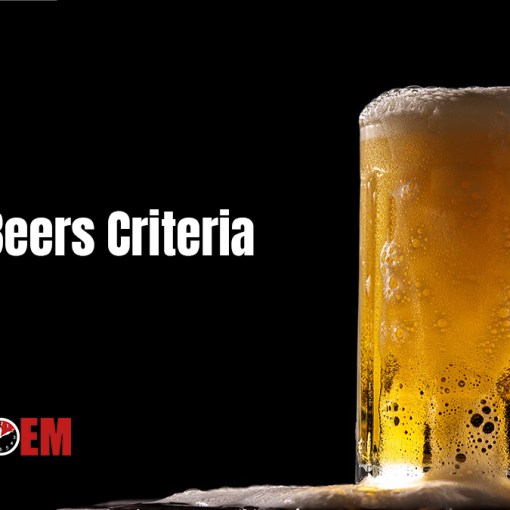Morgenstern, J. Torsades de Pointes: Approach to resuscitation, First10EM, January 9, 2017. Available at:
https://doi.org/10.51684/FIRS.3751
A 46 year old female is referred into the emergency department after multiple syncopal episodes. Her family physician did blood work and found her to be hypokalemic. She is on venlafaxine for depression and amitriptyline for sciatica. She is currently on a course of moxifloxacin for her sinusitis and this morning took a dose of fluconazole for the resultant candidiasis. On arrival, she is alert and looks well. However, as the ECG is being performed, she slumps over and you see torsades de pointes:

My approach
Treat the ventricular tachycardia
Torsades de pointes is a ventricular tachycardia. In the unstable patient, cardiovert. In the pulseless, defibrillate. (The polymorphic nature of the rhythm may interfere with the defibrillator’s ability to synchronize, so cardioversion may not be possible. In that case, in the unstable patient, deliver an unsynchronized shock.)1
What do you do if the patient is stable? I think it is reasonable to electrically cardiovert stable ventricular tachycardia, but you can also attempt to treat it medically. Torsades de pointes is caused by a prolonged QT. Almost all of the antiarrhythmics that we normally use to treat ventricular tachycardia, such as amiodarone and procainamide, will prolong the QT further, and therefore can make your patient worse. Do not give amiodarone or procainamide. Lidocaine (1.5 mg/kg load) is a reasonable option.
The medical treatment for stable torsades de pointes is magnesium 4,5
- Magnesium
- Loading dose of 2 grams IV
- Repeat once if no clinical effect
- This loading dose is best given slowly (over 10-20 minutes), but in the unstable patient it is reasonable to give it as a slow IV push
- Start an infusion at 1-4 grams/hr
- Monitor magnesium levels: if >2.5 mmol/L cut infusion in half; if >3mmol/L stop the infusion
- Monitor clinically: The major side effect of hypermagnesemia is depression neuromuscular function. Monitor reflexes, bradycardia, respiratory distress. Be prepared to intubate
- Loading dose of 2 grams IV
Prevent torsades from recurring
Converting the patient out of torsades de pointes is only the first step. The underlying cause will still be present and therefore the rhythm is likely to recur. We need to prevent it from recurring while we search for and treat the underlying cause.
Stabilize the cardiac myocyte
However you got your patient out of Torsades, your first line agent to keep them out is magnesium. Use as described above. Hypokalemia and hypocalcemia should be treated, if present.4
Speed up the heart (to decrease the QT interval)
This can be done either medically (using isoproterenol) or electrically. It you choose to electrically pace the heart, you can use the transcutaneous approach, but the transvenous approach is preferred because of a higher capture rate and the ability to perform without sedation.4 A rate of 90-110 is usually sufficient, but you might need to go as high as 140. Once the rhythm has been adequately suppressed, you can titrate the rate down to the lowest that continues to suppresses dysrhythmias.4
- Isoproterenol4,6
- Start at 5mcg/min (0.1mcg/kg/min in children)
- Titrate to 30 beats/min above patient’s natural rate (or whatever rate is needed to suppress torsades)
Stop contributing medications
Finally, discontinue any medications that could potentially result in QT prolongation.
Notes
The most important thing to mention about the management of torsade de pointes is that there is essentially no evidence. The best available evidence is for the standard ACLS algorithm, with no differentiation made between torsades and standard monomorphic ventricular tachycardia. There are 2 observational studies demonstrating an association between magnesium use and termination of torsades, causing the AHA to give in a class IIb LOE C rating.1 The ECC guidelines grade the evidence for overdrive pacing, isoproterenol, beta-blockers, and lidocaine all as “indeterminate”.2 There are no randomized trials of pacing to prevent torsades de pointes. The largest review, covering 18 patients, demonstrated that pacing to a rate of 70 beats per minute was successful at suppressing torsades des pointes.3
Although I think that “torsades des pointes” is the grammatically correct term, I have used “torsades de pointes” throughout because that is the term used in every document I read, and it is the only way that people will find this point is they need it.
Torsades de pointes is classically paroxysmal, with runs lasting less than 90 seconds.
| Antipsychotics | Antidepressants |
| Chlorpromazine Haloperidol Droperidol Quetiapine Olanzapine Amisulpride Thioridazine | Amitriptyline Doxepin Imipramine Nortriptyline Desipramine Mianserin Citalopram Escitalopram Venlafaxine Bupropion Moclobemide |
| Antihistamines | Antibiotics |
| Diphenhydramine Astemizole Loratidine Terfanadine | Erythromycin Clarithromycin Azithromycin Ciprofloxacin Moxifloxacin Levofloxacin Ketoconazole Fluconazole Trimethoprim-sulfamethoxazole |
| Other | |
| Chloroquine Hydroxychloroquine Quinine Ondansetron Amiodarone |
More First10EM Resuscitation Plans
Other FOAMed Resources
The Internet Book of Critical Care: Torsades de Pointes
Magnesium infusions for atrial fibrillation & torsade on PulmCrit
Polymorphic Ventricular Tachycardia and Long QT syndrome with continuously recurrent polymorphic VT: Management on Dr Smith’s ECG Blog
EMCases Best Case Ever: Chloral Hydrate Poisoning and Cardiac Arrest
Magnesium infusions on PulmCrit
A better approach to Torsade de Pointes on PulmCrit
QT Interval on Life in the Fastlane
References
- Neumar RW, Otto CW, Link MS et al. Part 8: Adult Advanced Cardiovascular Life Support: 2010 American Heart Association Guidelines for Cardiopulmonary Resuscitation and Emergency Cardiovascular Care. Circulation. 122(18_suppl_3):S729-S767. 2010. [article]
- ECC Guidelines. Part 6: Advanced Cardiovascular Life Support : Section 5: Pharmacology I: Agents for Arrhythmias. Circulation. 102(Supplement 1):I-112-I-128. 2000. [article]
- Foley P, Kalra P, Andrews N. Amiodarone–avoid the danger of torsade de pointes. Resuscitation. 76(1):137-41. 2008. PMID: 17716804
- Charlton NP, Lawrence DT, Brady WJ, Kirk MA, Holstege CP. Termination of drug-induced torsades de pointes with overdrive pacing. The American journal of emergency medicine. 28(1):95-102. 2010. PMID: 20006210
- Yealy DM and Kosowsky JM. Chapter 79. Dysrhythmias. In: Marx JA et al. eds. Rosen’s Emergency Medicine, 8e. Philadelphia: Elsevier Saunders; 2014.
- Bessman E. Emergency Cardiac Pacing. In: Roberts JR, ed. Roberts and Hedges’ clinical procedures in emergency medicine, 6e. Philadelphia,PA: Elsevier; 2014.






11 thoughts on “Torsades de Pointes: Approach to resuscitation”
Great write up as always!
One QT prolonging agent I don’t see listed that is worth knowing about is methadone.
https://www.ncbi.nlm.nih.gov/pmc/articles/PMC3805428/
Cheers and happy new year!
Thanks Taft
I knew including a list was a mistake. Methadone is definitely an important medication to include (it has been added). It was inevitable that I was going to miss some and a number on this list may not actually cause clinically important QT prolongation. I tried…
The case originally stated that the patient was on azithromycin. I have changed it to moxifloxacin because Josh Farkas has done such a good job illustrating that azithromycin probably doesn’t cause torsades:
http://emcrit.org/pulmcrit/myth-busting-azithromycin-does-not-cause-torsade-de-pointes-or-increase-mortality/
http://emcrit.org/pulmcrit/brief-rant-still-no-evidence-that-azithromycin-increases-mortality/
Can I recommend https://crediblemeds.org/healthcare-providers/ (QTDrugs list) as a good reference for drugs to avoid in suspected / known LQT patients.
Hey Doctor,
Would you consider another pharmacological agent such as atropine, adrenaline or any positive chronotrope to induce the overdrive supression of the TdP?
Thank you for the question.
Atropine is very unlikely to achieve or sustain the necessary heart rate, so I would avoid it. Epinephrine is a reasonable option, especially if you need to support the blood pressure as well, but for most patients I would imagine that doses would be quickly limited by unnecessary vasoconstriction.
Hey Justin.
I had a case of Torsades in a 40yo male who had a prolonged QT from hypokalemia after after having diarrhea for 2 days. He was cardioverted a total of 11 times while we got the Mag and Potassium in him. The isoproterenol is what ultimately stabilized him.
During the case we were uncertain about the maximum allowable rate of potassium infusion. Uptodate said 10-20meq/hr through peripherals, with anecdotal reports of 40meq/hr through a central line. We ended up placing a fem and giving 40meq/hour infusion after pushing 10meq or 20meq to start.
Any thoughts on this?
Also, would love to learn more about your process of gathering information and distilling it into something concise and readable. I found your site because I was independently creating resuscitation plans in my Notes app. I tend to use 2nd hand info though from Wikem, Uptodate, EMRAP and obviously First10EM, while you clearly go to the primary sources.
The dosing we usually use in eclampsia is 4 grams as a slow push – so that is about 32 meq over 5 minutes through a peripheral line. I have seen that repeated 2 or 3 times in the first hour – so that would be more than 100meq through a peripheral IV over an hour. The magneisum doses used in obstetrics are usually considerably higher than we use elsewhere, and it gives me some comfort. I have never started a central line for magnesium, and I had a similar case that was defibrillated more than 30 times before the Torsades was controlled. I just kept pushing mag through the peripheral IV. However, mag dosing isn’t a topic that I have specifically looked into.
In terms of distilling information – I find its best to approach it from both directions. Find people that have already summarized the literature, look at their citations, and download those to have a look for yourself. At the same time, do a search of pubmed or google scholar to see if you uncover any important information they missed. Its a little more timely, but at the end of the day you will be a lot more certain that you ended up with the best answer.
I believe “torsade de pointes” is actually the correct term. But you’re right, a lot of articles spell it “torsades.”